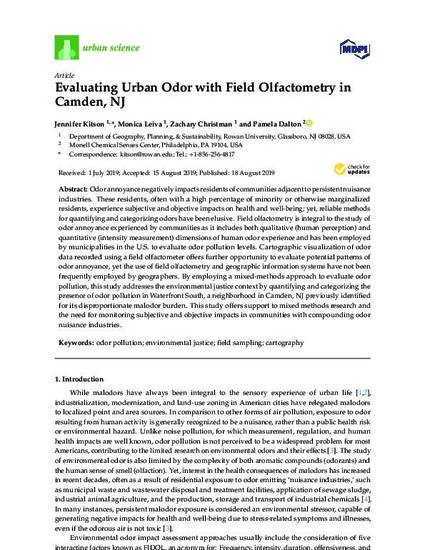
Odor annoyance negatively impacts residents of communities adjacent to persistent nuisance industries. These residents, often with a high percentage of minority or otherwise marginalized residents, experience subjective and objective impacts on health and well-being; yet, reliable methods for quantifying and categorizing odors have been elusive. Field olfactometry is integral to the study of odor annoyance experienced by communities as it includes both qualitative (human perception) and quantitative (intensity measurement) dimensions of human odor experience and has been employed by municipalities in the U.S. to evaluate odor pollution levels. Cartographic visualization of odor data recorded using a field olfactometer offers further opportunity to evaluate potential patterns of odor annoyance, yet the use of field olfactometry and geographic information systems have not been frequently employed by geographers. By employing a mixed-methods approach to evaluate odor pollution, this study addresses the environmental justice context by quantifying and categorizing the presence of odor pollution in Waterfront South, a neighborhood in Camden, NJ previously identified for its disproportionate malodor burden. This study offers support to mixed methods research and the need for monitoring subjective and objective impacts in communities with compounding odor nuisance industries.
Kitson, Jennifer ; Leiva, Monica ; Christman, Zachary ; & Dalton, Pamela. (2019). Evaluating Urban Odor with Field Olfactometry in Camden, NJ. Urban science, Vol.3 (3), p.93.

This is an open access article distributed under the Creative Commons Attribution License and published by MDPI.